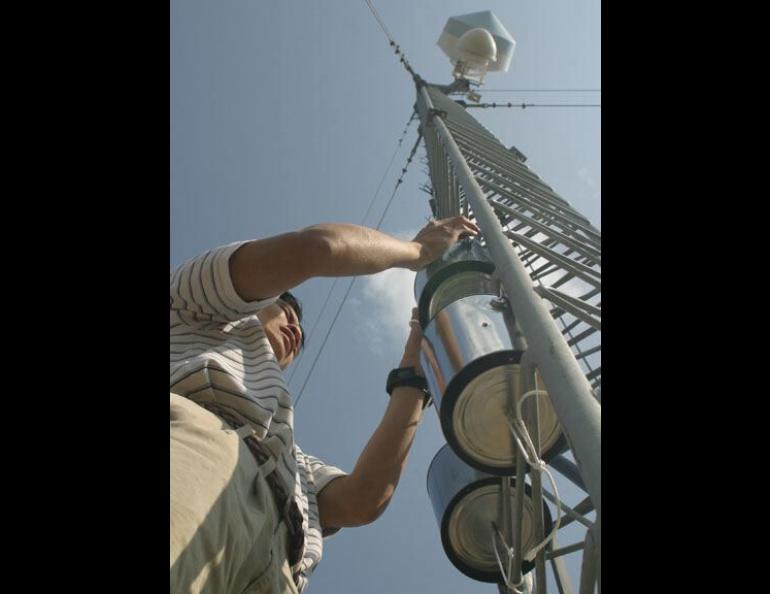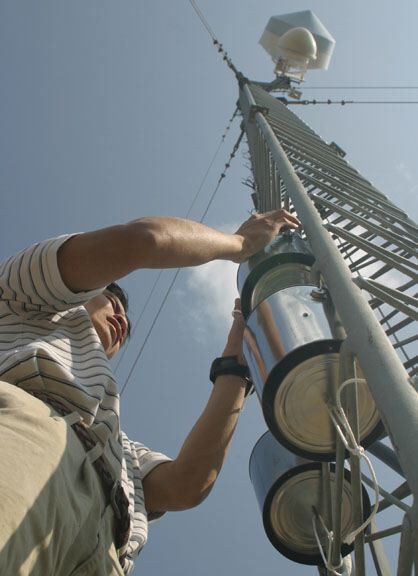
Sampling Alaska Air for Migrant Pollution
In Barrow, Poker Flat, Denali National Park, Trapper Creek, and Homer, pollution sensors are now absorbing PCBs, dioxins, pesticide residue, and other nasty migrants to the north.
Ted Wu drives and flies a traverse from north to south in Alaska to string out passive air samplers that capture unwanted visitors to the state. His goal is to see what persistent organic pollutants have hitchhiked north on air currents and have settled in the cells of people, seals, salmon, plants, and other northern life forms. Wu is an environmental toxicologist and a doctoral student at the University of Alaska Fairbanks’ Geophysical Institute and the UAF department of chemistry and biochemistry.
Toxins from all over the globe reach the north. Chemicals released in other parts of the world travel on air currents in warm weather, then fall out with rain or snow as they cool. After the compounds reach the ground, warm weather can again liberate them into the air, where they continue their journey north.
Because DDT and other unsavory compounds survive in the environment for decades, the toxins can move thousands of miles. A few recent examples are the pesticide lindane that researchers found in the bark of Denali Park trees about 10 years ago, and the DDT and PCBs other scientists found in the fat of salmon returning to the Copper River. Other researchers discovered dioxins in the breast milk of women from Nunavut in Canada’s Arctic. Dioxins are large molecules created by burning plastics and other things containing chlorine. A researcher once speculated on how dioxins could have reached Nunavut after tracking the pollutant with a computer model. After riding air currents northward from a smokestack of an Indiana factory, dioxins dropped with snowflakes into Hudson Bay, where, algae absorbed the dioxins. A fish ate the algae; a bearded seal ate the fish, and dioxins built up in the animal's fatty tissue. The woman in Nunavut ate the seal meat, and her body transferred the dioxins to the fatty molecules of her breast milk.
Wu came to Alaska from Texas Tech and was awarded an Environmental Protection Agency fellowship because he wanted to study the migration of dioxins and other persistent organic pollutants to the Arctic. His previous study was far from the Arctic: he checked crocodile eggs in Belize for the presence of pollutants. In Fairbanks, he has designed air samplers made of new paint cans into which he strings a three-foot section of film with a fatty substance inside. The film is the size of that in a 35-millimeter camera; it absorbs pollutants, which leach through the outer membrane and collect in fat.
Wu will leave the air samplers out across the state for about four months this summer. In September, he will collect the fatty films from across the state, process them, and then identify the persistent organic pollutants that have settled from Barrow to Homer.





